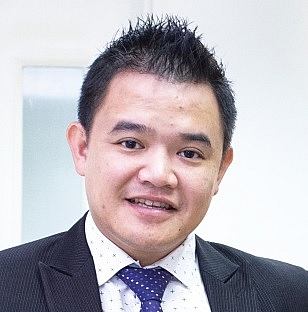Vietnam, Indonesia, and the Philippines have all worked hard to improve their legal frameworks to protect foreign investors and remove risks associated with issues such as repatriation of funds and providing a safe working environment for their employees.
 |
| Chris Marriott CEO, Savills Southeast Asia |
To become an appealing destination for foreign direct investment (FDI) for financiers from around the world such as India and China, the ASEAN has clearly taken the first steps to facilitate co-operation, promoting free trade and working towards the free movement of labour. Together, Southeast Asia offers a large, diversified population that can compete far better than if they were operating independently. There are now multiple free trade agreements in place that allow greater trade exchange with increased international exposure and governance. This will permit easier trade with reduced barriers.
All ASEAN nations benefit from large populations and young demographics, making them attractive for foreign investors at a time when aging populations have become a serious threat to growth and investment returns going forward. Vietnam in particularly has benefited from a stable government and should use this stability to continue driving rapid economic development. This can be done in several areas, such as by improving the legal framework or investing in infrastructure and education, as well as a promoting greater environmental sustainability to help fight climate change.
One stand-out factor for Vietnam has been the exceptionally stable currency and any measure to ensure that this remains the case will continue to make Vietnam attractive for foreign investment and set it apart from some of its regional competitors. Foreign real estate investors in Vietnam are currently frustrated by the slow pace of project approvals which can severely impact their access to development opportunities and also have a significant impact on their achievable returns. If Vietnam can improve access to land for development, there is huge interest from foreign developers which will help establish a more sustainable real estate market over the longer term.
Besides streamlining project approvals, a transparent land registry and fast issuance of real estate titles would also assist in building confidence among foreign investors. For example, overseas residential buyers want to be certain that they will receive their red books in accordance with the law and will not face long delays by local authorities.
In addition, Vietnam has an unprecedented opportunity to tap into the growing momentum of manufacturing moving out of China, which initially began with the trade war with the United States and is now strengthened by supply chain issues which highlighted manufacturers’ over-reliance on China. With the right incentives (primarily tax-related ones) and increased investment in infrastructure, Vietnam can continue to attract the largest manufacturers and continue to move up the value chain, with more investment in high-tech industries.
Globally, there is a concerted effort to reach sustainable development. Vietnam has recognised this and is striving to ensure a balance between environmental outcomes and delivering a guaranteed power supply. Recent initiatives such as the Bac Lieu liquefied natural gas project demonstrate this commitment. There are also strong initiatives for smart city technologies that will ensure Vietnam is a true international destination for foreign capital.
During the past 30 years Vietnam has been trying to attract investment from foreign countries into traditional fields. To attract new-generation FDI, however, Vietnam can and should aim to move further up the value chain. Moreover, to ensure that this is sustainable and maintained over the longer term, such development needs to come in tandem with improved education, working conditions, and infrastructure (including roads, ports, airports, and reliable electricity supply).
It is important to ensure the even development of the entire ecosystem, encouraging the development of the supporting industries and not just focusing on the larger players who cannot survive without their suppliers. Vietnam’s infrastructure expenditure is one of the highest in the region and will continue to deliver competitive advantages as these projects transform the investment landscape.
|
Pham Duy Khuong - Managing director, ASL Law
Considering the practical conditions of countries in the ASEAN, the mechanism of co-operation is still not highly feasible. That comes from various difficulties. First, the economic gap among countries in the region is still large from the infrastructure to capacity of development. With this gap, it is difficult to create a mechanism to balance benefits among countries when attracting high quality foreign direct investment (FDI). Second, ASEAN countries are still developing, so they still put their national interests first to focus on developing with their own FDI attracting policies to compete with the others in the region. Therefore, it will be difficult to promulgate a general agreement for long-term interests in the region. Third, high-quality FDI requires high quality human resources, but there are some low-level developing nations here that cannot meet the conditions for such a thing. Hence, high-quality FDI will also only focus on highly developed countries in the region. And the last one is that there are still many problems in establishing a general legal institution because each country has its own attraction policy to create its own competitive advantage. However, conducting a general mechanism for this can be carried out emitting from various advantages. The ASEAN has had general transport agreements that facilitate movement between countries. From that, this is a basis for the formation of a common production base and common economic zones in the community. Peter Ryder - CEO, Indochina Capital
According to the 2019 World Investment Report, FDI inflows to Southeast Asia were up 3 per cent to a record level of $149 billion, mostly driven by investment in Singapore, Indonesia, Vietnam, and Thailand. The disruption caused by COVID-19 has pushed multinationals to restructure their supply chains to be more resilient, and the ASEAN is well-positioned to benefit from the potential wave of relocation and FDI. The advantages of a co-operative ASEAN, united to compete against the likes of China and India, would mean increased FDI inflows and potentially a higher standing on the global stage. Due to the region’s connectivity with China and the ASEAN-China Free Trade Area, moving production to Southeast Asia can be an attractive proposition for foreign investors, as we are seeing lower production costs being offered by regional nations. There is also potential to maintain their distribution to China while tapping into the ASEAN’s large population and market size: the bloc is home to a young, increasingly urbanised, aspirational population with growing spending power, which will be bolstered by increased FDI inflows. Nonetheless, there is still substantial investment needed to improve connectivity between ASEAN nations. Intra-ASEAN logistics remain expensive and progress towards integration with the ASEAN Economic Community has slowed. There is also competition between ASEAN nations to attract FDI, as each country provides different incentives to foreign investors. Leon Cheneval - Business and Product Development, Real Estate Data Network
Co-operation within ASEAN nations to compete for FDI would be advantageous for the investor. The pandemic had slowed many companies in their decision-making process but that said we see them bouncing back very quickly. Central investment organisation would allow potential investors to quickly analyse the potential opportunity. Such an organisation or programme would allow for faster movement of FDI and place it into the best fit solution. A common shared marketplace would be advantageous as the entity can address quickly, accurately, and with greater transparency the ideal FDI solution so investors can make informed decisions. However, we are of the opinion that such collective information is still difficult to find and analyse, and this is a notable restriction for investors. An ASEAN common-share organisation would need to be well organised and well represented by each member state. The main concern would be the competitive nature of the region. Perhaps Vietnam is well advised to create a central working group that can assist such companies and be government supported so that information can be provided quickly and accurately. Review of laws has been the countries’ focus in the past and continues so streamlining or removing ambiguous legal text is a strong recommendation. Finally, the working group would seek out quality FDI suited to key projects from infrastructure to renewal energy and the real estate sector. Burkhard Schrage - Manager of School of Business & Management Program, RMIT University (Vietnam)
The ASEAN Economic Community (AEC) is the appropriate forum to discuss economic co-ordination between its 10 individual member states to strengthen competitiveness in the global race to attract FDI. ASEAN’s socio-economic diversity must be turned into an advantage. That’s not easy: states need to identify national competitive advantages and specialise more on specific products or industries while establishing an intra-ASEAN value chain. Co-operation, rather than competition, between member states will strengthen the overall competitiveness of the region. This also means that countries need to cease supporting industries in which they do not have a competitive advantage. The economic integration of the ASEAN is critical as China and India receive large market-seeking FDI: Tesla is building its $2 billion automotive plant near Shanghai to produce cars for the Chinese market, not in order to benefit from low labour cost. The AEC is the fifth-largest collective in the world in terms of GDP (with China second and India eighth) and therefore will become an attractive market-seeking investment destination. The recent AEC blueprint lays out strategic goals for 2025 such as increased integration and cohesiveness, strengthened competitiveness, more innovation, and enhanced connectivity and sectoral co-operation across the member states. These goals are surely in the right direction to increase the long-term competitiveness of the region. VIR |
Chris Marriott

Growing waves of FDI investment set to pose challenges for unskilled workers
Foreign enterprises are beginning to shift their investments into industries that require medium-level workers or higher-skilled workers as opposed to putting money into labour-intensive industries as in the past,

FDI into electronics should promote local companies
The electronic industry of Vietnam is heavily dependent on FDI.



